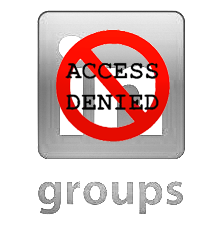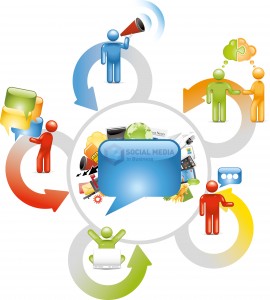Sales leaders are often quite puzzled when it comes to making social selling work for their sales organization. Who can blame them? Ask 10 people who promote their expertise in social selling, and it is highly likely that you will hear 10 different definitions of the term. Listen closely and many of the pundits are simply telling you that all your people need is to use LinkedIn. Not the entire story!
I have defined “social selling” as the process of using social media to network, prospect, research, engage, collaborate, educate and close all with the purpose of attaining quota and increasing revenue.
Notice that I mention that social selling is a process that incorporates the effective use of the right technology to achieve some very specific sales objectives. It certainly seems pretty straightforward, right? Then why are sales people struggling to make it work for them? For starters…
It Is a Brand New Ball Game Folks
1. Gaining access to prospects is much harder these days. Buyers just tune out your cold calls and broadcast emails. Even a recognized brand name doesn’t guarantee a sales meeting these days.
2. The decision making process in most companies is much more complex. I read somewhere that on average there will be 12-15 people involved in the purchase decision. Sales people need to build relationships with multiple influencers and sometimes it isn’t easy to tell who those key influencers actually are.
3. Getting a meeting at the C-level doesn’t necessarily move your solution to the front of the line. Yes, you should definitely set your sights on securing a meeting with the right decision maker at the highest level that you can, but you are fooling yourself if you think that the gal at the top isn’t going to involve her people in the process.
4. Social networking tools like LinkedIn, Twitter, Facebook and more have entered the mix. Sales people need to understand how social fits the sales process, but they also need to learn the nuances of participating in a social environment where there are unspoken rules and generally accepted best practices when trying to engage someone in the socialsphere. If you don’t know what they are, you will make a misstep that could be costly.
There Are No Short Cuts
Adopting a social selling approach is about change and change just isn’t easy. It also takes time. It takes setting a STRATEGY, ensuring that sales people have the right sales and technology SKILLS and that EXECUTION of the strategy is happening consistently.
On Thursday, July 25 @ 1pm Eastern, join me over at Top Sales World Academy for a FREE educational session about what it really takes to Solve the Social Selling Puzzle. REGISTER HERE! By the way, there are other educational sessions being conducted by some of the best in the field of sales!
 into a controversy that has ignited a firestorm of angry discussion among LinkedIn members. Many people are incensed over a new LinkedIn policy introduced (very quietly) in January. The policy relates to groups and is called Sitewide Auto Moderation dubbed SWAM.
into a controversy that has ignited a firestorm of angry discussion among LinkedIn members. Many people are incensed over a new LinkedIn policy introduced (very quietly) in January. The policy relates to groups and is called Sitewide Auto Moderation dubbed SWAM.



